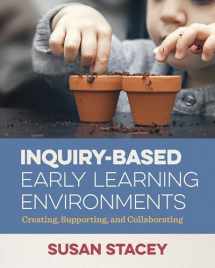
Inquiry-Based Early Learning Environments: Creating, Supporting, and Collaborating
Book details
Summary
Description
What does it mean to inquire? Grownups would say it means to question, to search for information, or to find out about a topic of interest. For children in an early childhood classroom, the definition is no different. From the time of their birth, children want to know how the world works and actively seek out information. How educators respond to their questions is what this book is all about.
Inquiry-Based Early Learning Environments takes an in-depth look at children’s inquiry. What does inquiry look like in early childhood settings? How does the environment affect children’s inquiries and teachers’ thought processes? Inquiry-Based Early Learning Environments examines inquiry in all its facets, including environments that support relationships, that create a culture of risk-taking in our thinking, that support teachers as well as children, that include families, that use documentation as a way of thinking about our work, and of course, the physical environment and all the objects and spaces within it. Throughout, stories about environments and approaches to inquiry from around the world are included as examples.


We would LOVE it if you could help us and other readers by reviewing the book
Book review



